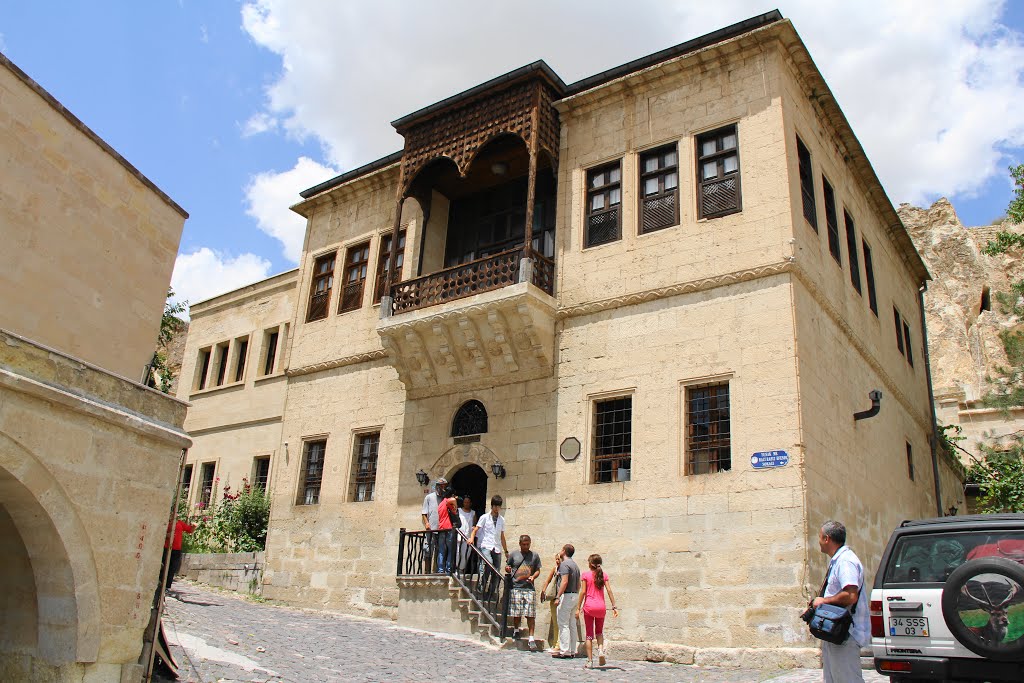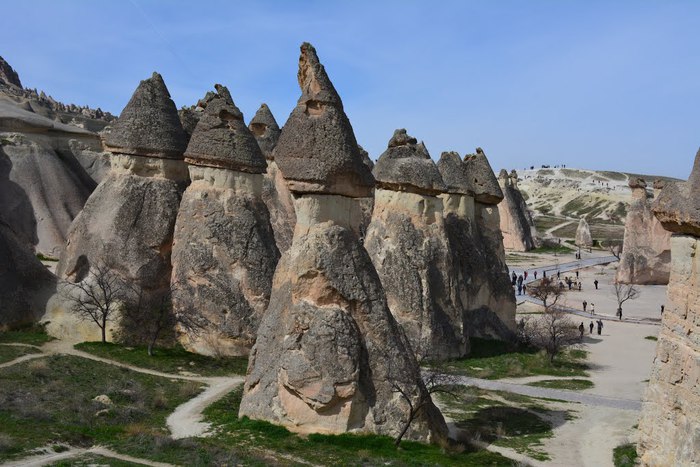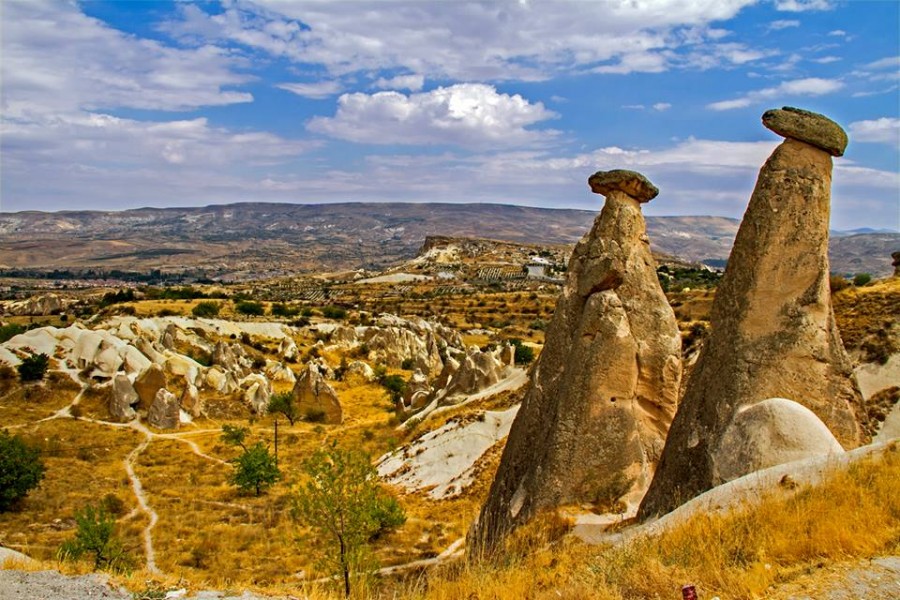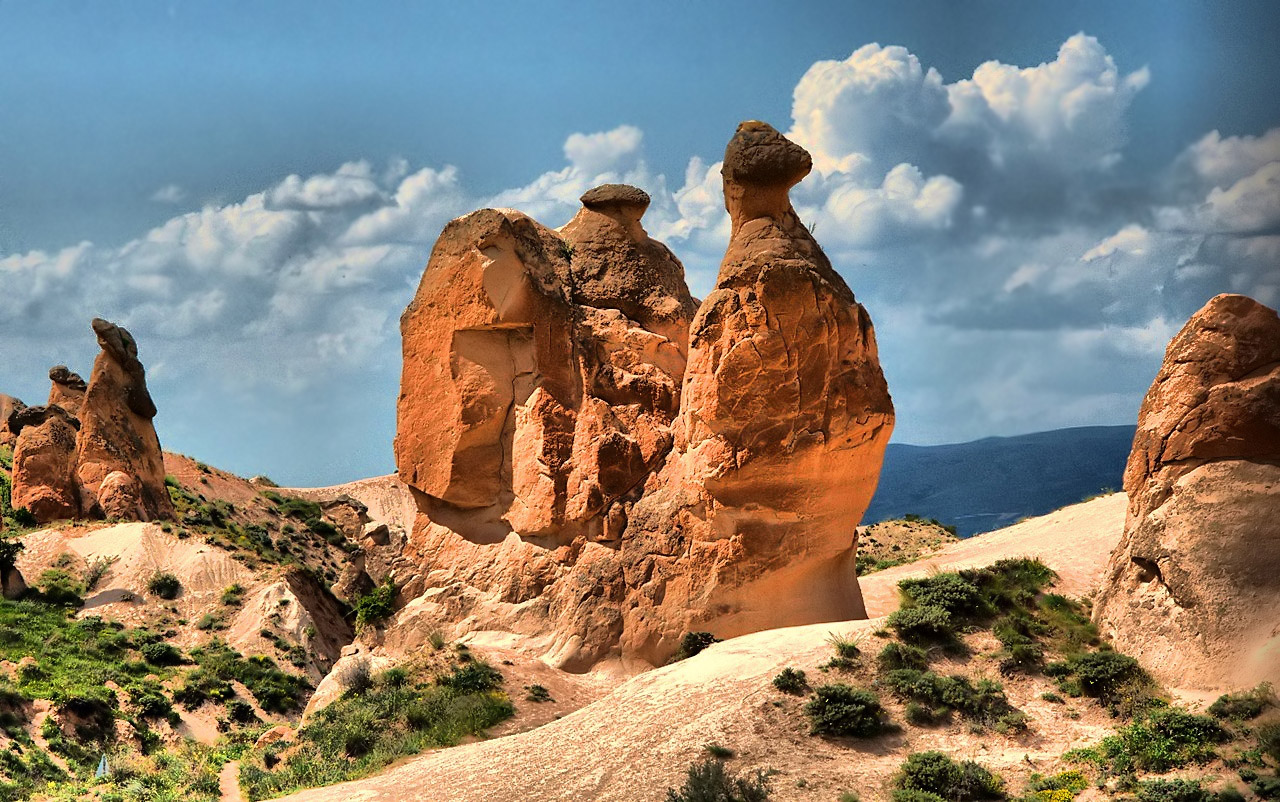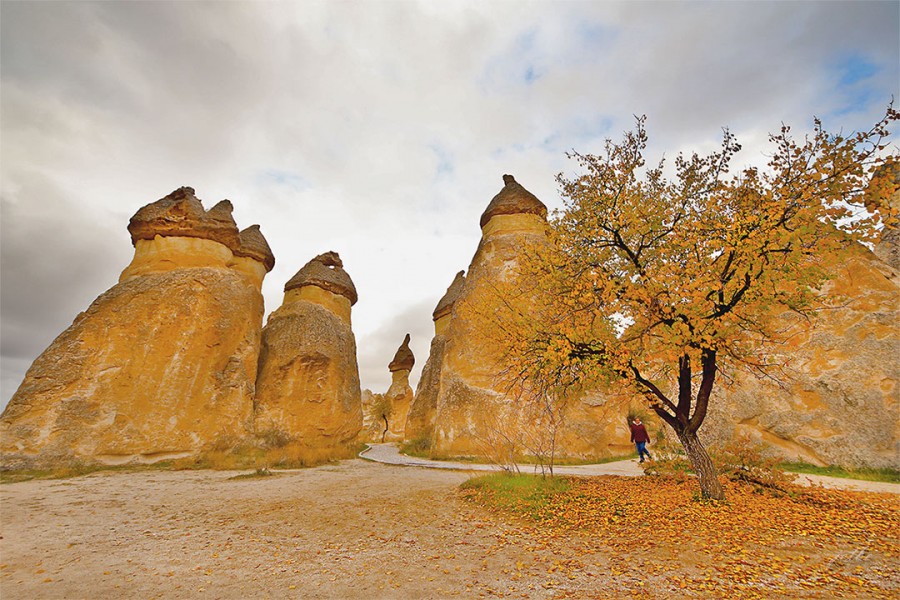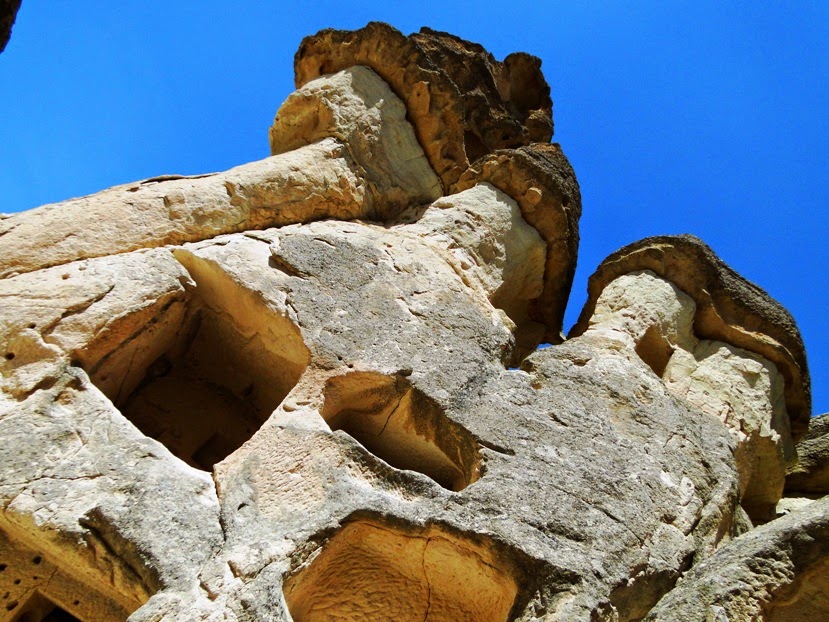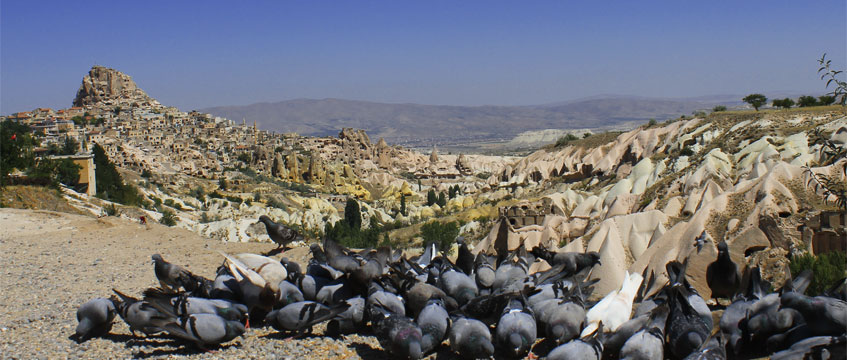Click to fill in the tour registration form.
Click to list of tour participants.
DAILY CAPPADOCIA TOUR
Pigeon Valley, Uçhisar Castle, Göreme Open Air Museum, Avanos, Paşabağlar, Dervent Valley, Ürgüp, Asmalı Konak
Information about the tour;
Breakfast: Not included in the price.
Lunch: Included in the price. (Testi Kebab in Uranus Restaurant, Avanos)
Dinner: Not included in the price.
Route: Konya- Aksaray (153km ), Aksaray – Nevşehir ( 80 km), Travel inside the Region (70 km )
Total Distance: 550 km
Tour price per person: 150 TL
Services Included in the Price
• Transportation from Konya
• Lunch
• Professional Guidance
• Catering in Bus
Services Not Included in the Price
• Breakfast
• Dinner
• Personal Spendings
PIGEON VALLEY
Pigeon valley is situated between Göreme and Uçhisar and is ideal for walking, as the trek is relatively easy. The name comes from the thousands of pigeon houses that have been carved into the soft tuff since ancient times. Although they can be found throughout Cappadocia, they are especially numerous in this valley. They were carved wherever space allowed, including abandoned cave houses and churches. In Cappadocia, pigeons have long been a source of food and fertilizer. The advent of chemical fertilizers has reduced the use of pigeon dung. However, some farmers still maintain their lofts because they insist that the reputation of Cappadocian fruits as the sweetest and most succulent in Turkey is entirely due to pigeon dung.
UCHISAR AND UCHISAR CASTLE
Uchisar is situated at the highest point in Cappadocia, on the Nevsehir-Goreme road, just 5 km from Goreme. The top of the Uchisar Castle, provides a magnificent panorama of the surrounding area with Mount Erciyes in the distance.
Many rooms hollowed out into the rock are connected to each other with stairs, tunnels and passages. At the entrances of the rooms, there are millstone doors, just like the ones in the underground settlements, used to control access to these places. Due to the erosion in places of this multi-leveled castle, it is unfortunately not possible to reach all the rooms. Most of the rooms, located on the north side of the castle are in use as pigeon houses (dovecuts) today. Farmers used these cave pigeon houses to collect the droppings of pigeons which is an excellent natural fertilizer for the orchards and vineyards.
There are also many other pigeon houses in Pigeon Valley (Guvercinlik Vadisi in Turkish) which connects Uchisar to Goreme. Most of these cave dwellings have been painted white to attract the birds and their valuable droppings.
The fairy chimneys to the west, east and north of Uchisar were hollowed out and used as graves during the Roman period. Inside these rock cut tombs, the entrances which generally face west, are klines or stone slabs on which the bodies were laid.
Many rock cut churches have been discovered not only on the outskirts of the castle but also inside it. The reason for this may be that Goreme, having numerous churches and monasteries, is very close to Uchisar.
The simple Byzantine graves on top of the castle are not very interesting as they have been eroded and ransacked. It is said that in towns with citadels, e.g. Uchisar, Ortahisar and Urgup (Bashisar), long defense tunnels reached far into the surrounding areas. However, since the tunnels have collapsed in places, this theory cannot be confirmed, but is a popular myth as to the great distances they cover.
GOREME OPEN AIR MUSEUM
The Goreme Open-Air Museum resembles a vast monastic complex composed of scores of refectory monasteries placed side-by-side, each with its own fantastic church. It is obviously the first sight to be visited by any traveler in Cappadocia, standing as it does in the very center of the region with easy access from all directions. It is only 15 minutes walk (1.5km, 1 mile) from Goreme village center. It contains the finest of the rock-cut churches, with beautiful frescoes (wall paintings) whose colors still retain all their original freshness. It also presents unique examples of rock hewn architecture and fresco technique. The Goreme Open Air Museum has been a member of UNESCO World Heritage List since 1984, and was one of the first two UNESCO sites in Turkey.
The area covered by this Open Air Museum forms a coherent geographical entity and represents historical unity. There are eleven refectories within the Museum, with rock-cut churches tables and benches. Each is associated with a church. Most of the churches in Goreme Open Air Museum belong to the 10th, 11th and 12th centuries.
There are many churches and chapels in Goreme Open Air Museum but the most important ones are:
Nunnery
The 6-7 storey rock mass to the left of the museum entrance is known as "the Nunnery". The dining hall, kitchen and some rooms on the first floor, together with the ruined chapel on the second level, can still be visited. The church on the third storey, which can be reached through a tunnel, has a cruciform plan, a dome with four columns and three apses. The templon on the main apse is rarely found in Goreme's churches. Besides the fresco of Jesus, painted directly onto the rock, designs painted in red can also be seen. The different levels of the monastery are connected by tunnels, and "millstone doors", such as those found in the underground cities, and were used to close off these tunnels in times of danger.
St. Barbara Church
This church is situated behind the rock housing Elmali (Apple) Church. It has a cruciform plan, with two columns. The north, south and west arms of the cruciform are barrel vaulted, and the center, the east arm, and the east corners are domed. There are a main, central apse and two side apses. Motifs were painted in red directly onto the rock. The walls and the dome are decorated in a variety of motifs including geometrical patterns, mythological animals and military symbols. The walls also have motifs resembling stonework. This church dates back to the second half of the 11th century.
Apple (Elmali) Church
One of the most prominent buildings in the area with its vivid colors, the church is a groin-vaulted structure with cross-in-square plan, having four columns and a central dome. It has beautiful frescoes dating to the 11th and 12th centuries. And where these have fallen off, you can see simple red-painted ornaments from the iconoclastic period. The frescoes are narrating scenes from the Bible and the life of Christ, the Hospitality of Abraham and Three Hebrew Youths. The building derives its name from the apple orchard collapsed a long time ago, in front of the main entrance.
Snake (Yilanli) Church
This church has a linear plan, consisting of two chambers. The front section is barrel-vaulted, while the back one has a flat ceiling. The red ochre ornaments imitate hewn stone plait. Frescoes dated to the 11th century, are painted directly on the wall. Opposite the entrance, there is an image of Christ with a book in his hand, and at his left, on both sides of a large cross, are Emperor Constantine and Helena. Right next to it, the Killing of the Snake by St. George and St. Theodore is depicted. On the opposite wall, Onophrios can be seen with a sapling in front of him, also the Apostle Thomas, and the founder of the building, St. Basileios holding a book in one hand and sanctifying with the other.
Dark Church (Karanlik Kilise)
The entrance to this church is from the north through a winding tunnel which opens into a barrel-vaulted narthex. You have to pay an extra admission fee (10 TL per person) but it is surely worth it. In the south of the narthex there are three graves, two of which are big and the other, small. The church has a cross plan, the arms of the cross having a diagonal vault. The templon of the main apse has been destroyed. This Church dates to the end of the 12th century. Some of the scenes on the walls are Deesis, Annunciation, Journey to Bethlehem, Nativity, Baptism, Raising of Lazarus, Transfiguration, Entry into Jerusalem, Last Supper, Betrayal of Judas, the Crucifixion and Anastasis.
Carikli (Sandals) Church
This two columned church (two other columns being in the form of pillars), is cross vaulted, and has three apses and four domes. The well preserved frescoes show the life of Jesus, Hospitality of Abraham, and images of the saints and the donors of the church. Although it resembles both the Karanlik (Dark) and Elmali (Apple) Churches, the scenes of the Way of the Cross and the Descent from the Cross make this church different from the others. The figures are generally large. The footprints under the Ascension scene give the church its name, which means "with sandal". The church dates back to the end of the 12th and the beginning of the 13th centuries. The center dome houses a picture of Jesus the Pantocrator with the busts of angels in the insets. On the central apse is Deesis, on the north apse Mary and the Baby Jesus, and on the south apse, a picture of St Michael.
Even though Tokali church is located down the museum around 50 meters, you can visit the church with the same ticket that you used for Goreme Open Air Museum. It is a complex made up of 4 main chambers. The entrance to the New Church having a rectangular plan with longitudinal axis is made through the barrel-vaulted single-naved Old Church. This rock settlement is divided with arches into three sections. Containing the most important samples of paintings, the building has been decorated in various periods.
In the Old Church section, frescoes dated to early 10th century, painted in bands of rich red and green, represent scenes from the Bible. The indigo dominating the main chamber frescoes in the New Church, is a feature discerning the structure from the others. Among the rock churches in Cappadocia, Tokali has the best paintings narrating the life of Christ in the most detail. The church is decorated with the Infancy (childhood of Christ), Ministry and Passion cycles, with several episodes from the life of St. Basileios.
AVANOSThe town of Avanos is set on the banks of the Kizilirmak, the Red River. The town is about 8 kilometers (5 miles) from Goreme. Avanos has a lively center with all the usual amenities including a modern, tourist-oriented hamam (Turkish Bath). A large travelling market visits Avanos on Fridays. We suggest a visit to Avanos for individual travelers on Fridays. This tented market has everything for the house, clothing, fruits and vegetables and more.
Starting just outside the shopping center the old village of Avanos winds up the hills leading away from the town and is a beautiful maze of old stone houses, some restored, some converted and some sadly abandoned to their fate. In some of the abandoned houses the features of traditional Ottoman architecture can be seen along with ancient decorations, motifs and murals.
The Kizilirmak (red) river (ancient Halys river) is the longest river in Turkey and it does not only separate the town from other parts of Cappadocia, but also gives the supplies the clay for pottery. It is by this river that the red pottery clay is found from which Avanos derives its main livelihood and its foremost claim to fame. Pottery has been produced in the Avanos area for centuries and some of the techniques still used date back to Hittite times to 2000 BC. The Hittites named the town "Zu Wanes"and it became "Venessa" during the Eastern Roman (Byzantine) Empire.
Avanos is a mass of family run potteries. These famous potters make wonderful souvenirs and are available at a wide range of prices from simple ashtrays and mugs to ornate plates and chess sets.
About 14 kilometers (9 miles) from Avanos is the underground city of Ozkonak and the beautiful 13th century Seljuk caravanserai, Sarihan (where whirling dervishes ceremonies are performed each evening), is only about 3 kilometers (2 miles) from the town center.
PASABAG (MONKS VALLEY)
Pasabag in Cappadocia is located on the road to Zelve, coming from Goreme or Avanos. Highly remarkable earth pillars can be seen here, in the middle of a vineyard, hence the name of the place which means: the Pacha's vineyard. Pacha means "General", the military rank, in Turkish and it is a very common nick name. This site is also called Monks Valley. The name was derived from some cones carved in tuff stones which stand apart. Currently, there is a vineyard and a number of tuff cones standing right next to the road.
Some of these cones split into smaller cones in their upper sections, in which stylites and hermits once hid. The hermitage of Simeon monks was also here. A chapel dedicated to St. Simeon (Simon), and a hermit's shelter is built into one of the fairy chimneys with three heads. The entrance of the cell is decorated with antithetical crosses. Saint Simeon was living in seclusion near Aleppo in the 5th century, when rumors that he made miracles started to spread. Disturbed by all the attention, he began to live at the top of a 2m high column, and later moved to one 15m in height. From there he only descended occasionally to get food and drink brought by his disciples. The hermits of Cappadocia distanced themselves from the world by cutting into fairy chimneys rather than living on top of columns. They hollowed out the chimneys from bottom to top creating rooms at 10-15m high.
Pasabag valley contains some of the most striking fairy chimneys in Cappadocia with twin and even triple rock caps. This style is unique even for Cappadocia and these fairy chimneys are named mushroom-shaped fairy chimneys.
DEVRENT VALLEY
Devrent Valley, which is also known as Imaginary Valley and also as Pink Valley does not have cave churches like the other valleys of Cappadocia. There are no Roman castles or Roman tombs in Devrent Valley, either. Actually it was never inhabited. So what makes it so famous? The lunar landscape!
Devrent Valley (also spelled as Dervent Valley) reveals many different rock formations and is only a 10 minute drive from Goreme. The small fairy chimneys in the valley form a lunar landscape, or moonscape, by their strange look. The valley also has many animal shaped rocks. It looks like a sculpture zoo made by nature. Some of the most important, or the easiest seen animal shapes are camel, snake, seals, and dolphin. If you let your imagination run free you will find many others. It is like looking at clouds and seeing a dragon. There is even a rock pillar which looks like Virgin Mary, holding Jesus Christ.
